All London cartridges can trace their lineage to the (in)famous Decca London range.
Here is a little History for you.
Originally the Decca company was initiated in the 19th Century. Although its involvement with shellac was with a record player, which was used in the trenches, during the 1914-18 Great War. In the Second World War our Government asked Decca to produce a method to identify British Submarines from German ones. The result of this research was the FFRR ( full range frequency recording system) and in 1944 Decca made the very first FFRR discs.
The first Long Playing record, in mono, was made available in 1951 with stereo discs following in 1958. The engineers that continued the development were Bayliff and Cowie, who designed the FFSS ( full frequency stereo sound) pick up arm. Although the pick up arm was rather basic in that it had no hydraulic, or even spring loaded tone arm lift. It was a straight arm tube with no bias compensation, although the cartridge head mount was cranked to achieve the low levels of distortion that were available from the discs they produced.
Their pick up arm was called the FFSS Pick up arm and would only accept the Pick Up heads that were made by Decca, but as demand for other cartridges increased Decca designed an adaptor to accept the new ½ inch mounting cartridges, this was built as an SME fitting adaptor. All you had to do is mount the adaptor then plug into the end an SME headshell, not forgetting to realign the arm as the effective length was now much longer! The Pick Up Heads were the Mark One, Two and Three.
The results from this arm were astonishing, for the time, the Mark Two, my personal favourite, gave a punchy sound with loads of depth and width, allied to a strong treble reproduction. Decca also made a 78 r.p.m. tip for the shellac lovers amongst us.
In 1965 Decca realised that their Pick Up Heads were not able to be used in other manufacturers Pick Up arms, so 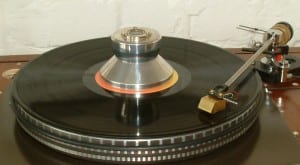 they introduced the Mark 1V cartridge with ½ inch mounting, complete with an elliptical stylus, shortly followed by the Super C4E, with a specially selected elliptical stylus. They also released the first of their universal pick up arms, this was known as the Decca International Pick Up arm. This was based on the unipivot principal, and used magnetic bias compensation, as well as using magnetism to stabilise the arm. Although, sadly, they had no cue lever, and the after market types were rather crudely built, I hasten to add these were not made by Decca Special Products! Although recently I did see a Decca lift device, on EBAY.
they introduced the Mark 1V cartridge with ½ inch mounting, complete with an elliptical stylus, shortly followed by the Super C4E, with a specially selected elliptical stylus. They also released the first of their universal pick up arms, this was known as the Decca International Pick Up arm. This was based on the unipivot principal, and used magnetic bias compensation, as well as using magnetism to stabilise the arm. Although, sadly, they had no cue lever, and the after market types were rather crudely built, I hasten to add these were not made by Decca Special Products! Although recently I did see a Decca lift device, on EBAY.
1974 arrived along with New Decca products, they had built a new Decca cartridge, this was known as the London Blue,and the London Grey, which shared a distinctive shape, and sported bodies made from alloy and a new mounting bracket, which was built for, the standard, 1/2inch mounting. Both of these models used a spherical stylus shape. All that needed doing when removing the cart for its Biannual overhaul was to gently pull the cartridge body down and the cart was removed! As the bracket was left in place, there was no need to realign the cart when the newly overhauled cart was to be reinstalled.
A lighter pick up arm was released which was known as the London International which was again a Unipivot with all the design objectives of the earlier Decca International Pick Up Arm. It also had a removable headshell as well! They also introduced the new Decca 2+2 dual fibre record cleaning brush which was available until recently, when the absence of components made the new company drop this particular model.
The R+D department continued with their quest when in 1985 they made the Decca Super Gold, which sported a Van Den Hul stylus profile and had a newly designed body which was built to try to control the famed resonance problem of the London Blue/Grey range. As well as a VDH II profile, which was offered as an option. Over the years of development the R+D team had tried to reduce the tracking weight from 3 grammes down to 1.7 grammes, these are the MAXIMUM VTF that these carts will track at, which we all recognise as the preferred figure. All of the new London carts are built to track at a max of 1.7 grammes.
In 1989 Racal decided to close down the Decca Radio and Television as well as the Special Products Division (Hi-Fi products)
So after some negotiation they decided to grant a licence to one of their engineers, John Wright who was granted this licence to continue manufacturing products under the brand name of “London” as the Decca name was now used by Tatung! Worldwide distribution was taken care off by Johns partner Brian Smith who is also responsible for Repair Co-ordination. So Decca as far as we are concerned no longer manufacture Hi Fi products.
So in 1990 Presence Audio, the distributors name, introduced the Decapod, an aluminium mounting plate for the top of the Maroon, Gold and Super Gold cartridges. This can be had as a factory fitted option and can be fitted by yourselves.
The first new John Wright cartridge Was the London Jubilee and was released in 1992, it featured a two piece cast alloy body and had an extended line contact stylus.
1995 arrived with the Super Gold acquiring a new stylus shape, this was the extended line contact type as fitted to the Jubilee.
The next model came in 2004 and had a two piece body, London Products had some design input from Conrad Mas of Avid Turntables, this had an ultra fine stylus and was called The Reference.
A few years ago They released a DJ cartridge, based on the Maroon, called The London Professional, it has a conical stylus and tracks at 3.5 Grammes and can be “back cued” this is also available with the Decapod. John and Brian approached an outfit called “Soulful Dance” to help with the preproduction research and development for this cartridge!
Presence Audio also introduced a mass plate, this is so owners of medium mass pick up arms just add the circular plate under the cartridge through its ½ inch mounting holes and this, 5 gramme weight, increases the mass of a 12 gramme arm up to 17 grammes! This is close to the optimum mass required for all of the London range of carts!
They have also released a new Pick up arm, this is an air-beam, parallel tracking arm and is known as The Reference Pick Up Arm. This is one of those rare products that sounds, “just right!” with exceptional performance, and it is all built and designed in this country, and as with all of their products this is all built by hand!
They are planning to introduce an “entry level” pick up arm which is in the design stage at the moment!
SET UP OF THE JUBILEE…………………..
Setting up any London cartridge is not that difficult. I generally set the tracking force, roughly, to somewhere in the 1.7  gramme range then adjust the cartridge for overhang. Using the Cartridgeman (Hi Fi News) test disc and the free alignment gauge. I used the “Two point technique”, this is a two point protractor which is printed on the 12 inch set up disc.
gramme range then adjust the cartridge for overhang. Using the Cartridgeman (Hi Fi News) test disc and the free alignment gauge. I used the “Two point technique”, this is a two point protractor which is printed on the 12 inch set up disc.
When setting London carts, I always set the cart so the sides of the body are parallel with the grid when the stylus is on the null point, this is because the stylus is relatively hidden by the cartridge body, the tracking force can be adjusted later.
As the, rather small to view instructions say, the arm pivot should be a little lower than the headshell this is a good place to start. This will look a little strange to those of us that set the arm parallel with the disc surface. I ALWAYS follow the manufacturers instructions with pick up carts, regardless of my own intuition. Nor the “advice” so freely given on Internet Fora. Now follows an hour or so of listening to test tones, this is to make sure that the cart is set up correctly, and to minimise mistracking.
After these tests I arrived at the point where the cart seemed to be tracking sweetly. The cart was tracking at 1.78 Grammes with enough bias compensation so the arm/cart combination would track the 16dB Bias test tone with ease. The arm resonance was about 11 Hz, this is ideal for my t/t and system set up. This was achieved in my trusty Hadcock 242 unipivot pick up arm.
THE PERFORMANCE.
From the very first note that this cart produced I could tell this was going to be a rather lengthy listening session………………..
I started with Decca SXL recording, number 6802………….Bartock Violin Concerto number 2in B minor. This was conducted by George Solti with Kyung-Wha Chung on solo violin. This is one of those discs that either works or it doesn’t, from the monotonic beats at the start to the rather frenetic pace of the concerto this cartridge never put a foot (stylus) wrong. The stereo image was HUGE, with both width and perceived depth in spades. I chose this disc as it is a veritable audio assault course. If a cartridge can achieve a realistic reproduction on this disc it can track ANYTHING!
Although I thought that the lower midrange was a little overblown, I reset the VTF (vertical tracking force) to 1.7 grammes This cured the slightly overbearing lower mid that was present before adjustment. As you can see I use test discs and real music to set cartridges up, this is because a test disc generally uses single test tone, whereas music is full of frequencies that are intermingled and are much more difficult to track.
After this, rather lengthy set up procedure, we are now ready to play some music.
Led Zeppelin3 was cued up, level reset and BAM the first bars rang out in my listening room, I have rarely herd the Immigrant Song so powerfully reproduced , and there was very little surface noise, for a thirty year old piece of vinyl this is remarkable. I followed this with “The Gallows Pole,” a delicious mix of acoustic and electric instruments, the banjo part was distinctive as was the acoustic guitar, the very powerful vocal line, along with the richness of the recording was the precision of the mix! I was quite frankly amazed the only carts that have ever done this for me where my rather special Decca SC4E, and my Cartridgeman Classic. I played all three of my Led Zep records with a growing smile on my face as the vinyl was exhausted. I was so tired, both emotionally and physically I decided to go to bed for some sleep and will restart tomorrow, as I powered the system down , I was humming the rhythm line from Moby Dick…………………………
THE NEXT DAY………………
First on the turntable was the fine Decca SXL 6862 Pachelbel Kanon in D major……with Karl Munchinger and the 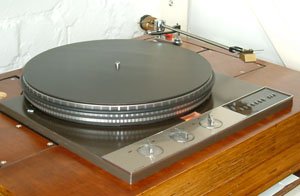 Stuttgart Chamber Orchestra. This disc will sound a little slow in comparison with modern recordings, but what richness and subtlety, what a magnificent recording, with all the hallmarks of a truly Hi End recording. From the introduction using lots of violins and violas to the Gigue in D with the organ rattling along under the violins this had space between the musicians and the correct depth and width, as well as height, this reminded me of countless concerts I have been to , this cart seems to have the ability to reproduce any type of music, from Hard Blues to Chamber music, and it does it with no hint of strain, a feature of poor transducers!
Stuttgart Chamber Orchestra. This disc will sound a little slow in comparison with modern recordings, but what richness and subtlety, what a magnificent recording, with all the hallmarks of a truly Hi End recording. From the introduction using lots of violins and violas to the Gigue in D with the organ rattling along under the violins this had space between the musicians and the correct depth and width, as well as height, this reminded me of countless concerts I have been to , this cart seems to have the ability to reproduce any type of music, from Hard Blues to Chamber music, and it does it with no hint of strain, a feature of poor transducers!
The disc on the turntable was now “Voyeur” by David Sanborn, with David’s precise playing of his alto saxophone and with the wonderful musicians this disc painted a picture of relatively easy to listen to Jazz/rock, although I am sure it is no mean feat to play this album. This album was recorded in quite a variety of studios in the USA, and the sound was rich with the realistic drum kit sound that I love on his albums.
Jean Luc Ponty, “Imaginary Voyage”, was next to listen to, with its frenetic opening to side two when the piece shows us some unexpected muscle! Ponty is a violinist who although classically trained chose the Crossover scene rather than the Symphonic route. This has to be played LOUD so my neighbours are in for a shock. Sumptuous rather than thin, this album is on of those that I play a lot, with Ponty,s playing being the point of this record he always gives the musicians space to fill or to carry the voice line, a lovely sound quality was evident from the opening.
Supertramp, “Crime of the Century” was dropped onto the turntable next, the thing that struck me was the tactile bass line, along with the most realistic drum sound that it has been my privilege to listen to. Surface noise was remarkable due to its absence, although I must say that I care for my vinyl and treat them better than my children!
From the opening track to the last reprise the stereo image was HUGE! In both width and depth, but even more surprising was the height of the stereo soundstage, unlike most multi track recordings from the seventies, this presented the subtleties in the mix. This album needs to be listened to at a very loud volume setting, and so it was, after the album finished I was drained both physically and mentally. I could tell exactly where the instruments were located within the soundstage. About halfway through this disc is a sound effect, it is a diesel shunting engine, which pans, slowly across the stereo image, what a precise Cart this is.
CONCLUSION.
This is an excellent transducer, although not as easy to set up as a conventional pick up cartridge. A little patience, and a thorough read of the instruction sheet is essential.
I had no mistracking errors, but I have to say that my set up procedure is almost painstaking, some would say it is like a punishment regime.
I have heard from people that Decca or London cartridges damage your vinyl, this is absolute nonsense, providing that you take great care in your set up!
If you are looking for a Cartridge that is a truly Hi End transducer I urge you to get in touch with Presence Audio and ask where your nearest dealer is. This cartridge is not the cheapest to buy, but at any cost it is a truly amazing product.
Retail price is……….£1597 Inc. VAT.
Author – Stewart Wennen
Want to read more hifi reviews?




















































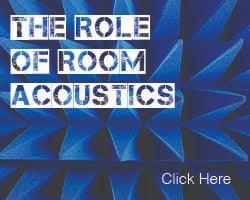
















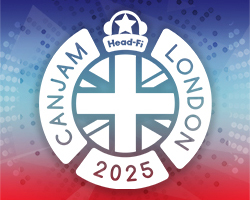




































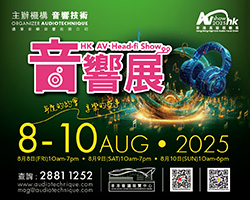
















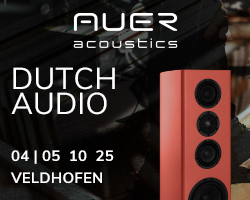







































































nice review stewart , one day i will afford to try
nice review stewart